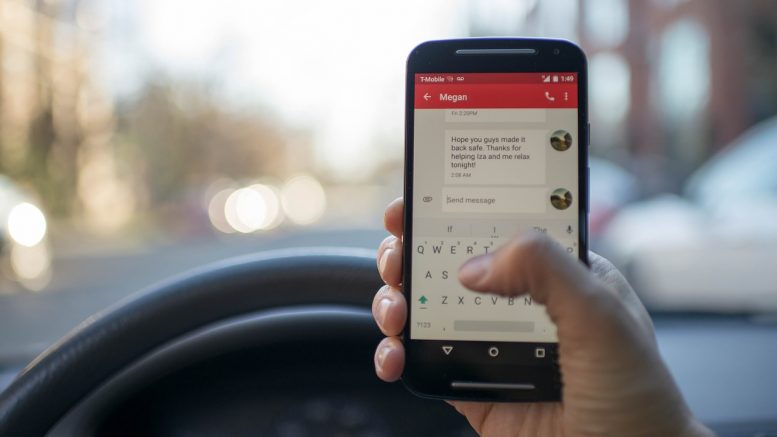The state of Washington has a somewhat unique name for using electronic devices while driving. This offense is relatively new, and is known as a DUI-E—Driving Under the Influence of Electronics. Distracted driving—which often includes the use of electronic devices—has steadily moved up the list of factors involved in automobile collisions. In fact, according to WSDOT, inattention and distraction are the most frequent contributing circumstances in car accidents. Consider the following statistics from WSDOT:
- There were 112 car accident fatalities in the state in 2013 which could be directly attributed to distraction and/or inattention by a driver.
- A distracted or inattentive driver is involved in a car collision every 15 minutes.
- At least 26 percent of all distracted driving deaths occurred in the 16-25-year-old demographic—the age group most likely to use electronic devices while driving.
- About half of all driver distraction fatalities in the state occurred on a weekend.
- According to seattlechildrens.org, performance of a secondary task greatly increases the risk of a car crash due to the cognitive demands of such tasks.
- Texting while driving can increase the risk of a car collision by as much as twenty-three times.
DUI-E—Drastic Measures to Reduce the Risk of Auto Accidents?
Unfortunately, distracted driving is at an all-time high, and the state of Washington has taken what some consider rather drastic measures to reduce the risks of such driving behaviors. The DUI-E law passed by the state of Washington, and is meant to help us think of our vehicles as “sanctuaries,” for ourselves and those we transport—our loved ones. All the research regarding distractions, and the dangers of using an electronic device while driving, has done little to alter these dangerous habits. Lawmakers in the state determined a bigger motivation was necessary—hence the DUI-E law.
What the DUI-E Law Does
The Driving Under the Influence of Electronics Law bans holding electronic devices (like cell phones) while driving, and even while stopped at a red light or stop sign. Under this new law, a driver may only use their cell phone to call 911, or by using one finger to trigger a voice-activated application or Bluetooth. Violations of the DUI-E law can cost $136 for a first offense, and, if you commit a second offense within five years of the first, you will pay $234. Lawmakers in Washington State respond to critics of the law by pointing to the fact that just as the auto accident death rate in the state was falling—after the state cracked down on DUIs and residents were beginning to consistently use seat belts—it began to increase again, due to the rapid rise of driver distractions, particularly electronic distractions.
Other Distracted Driving Behaviors
Proponents of the new law believe it is a big step in the right direction to avoid auto accidents, particularly auto accident fatalities due to distracted driving behaviors. A ticket, which takes money out of the offender’s bank account, and increases monthly insurance rates, seems the best way to let residents know just how serious state officials are about stopping distracted driving. Of course, the use of electronics while driving is far from the only distraction engaged in by drivers, although it is certainly the most common. Children yelling in the backseat, other passengers in the vehicle, eating and drinking, smoking, fiddling with radio stations, GPS devices or other car controls, daydreaming, and even reading are some of the more common driver distractions.
Teen Drivers at Even Higher Risk of Distracted Driving Accident
Teen drivers are at an even higher risk of distracted driving accidents. Not only are teens more likely to use electronic devices while driving, they are also more likely to be distracted by passengers, particularly teen passengers. Driving is the most dangerous during the first six months a new driver is on the road, due to driver inexperience. When you add distractions to inexperience, you have a real recipe for disaster.
Preventing an Electronics DUI
Police officers who see a driver in the state holding an electronic device in his or her hand, can now pull the driver over as a primary offense. To reiterate, drivers are only allowed to hold an electronic device in their hand if they are contacting emergency services, or they are parked or pulled over safely, out of the way of traffic. To prevent an expensive ticket—not to mention a significant increase in your auto insurance, put your cell phone or other electronic device on the back seat of your vehicle, or in the glove box. You can also download an app which prevents you from using your phone while your vehicle is in motion.
Apps to Break the Electronics Habit While Driving
As an example, consider the LifeSaver app which uses GPS monitoring, as well as a rewards system which allows drivers to break dangerous distracted driving habits. The LifeSaver app blocks the driver’s ability to use his or her phone while the vehicle is in motion, and automatically lets loved ones know the driver has reached his or her destination safely. LifeSaver also features a driver portal dashboard to help parents guide their teens toward responsible driving habits. There are many more apps currently out which can also help drivers stop using electronics—and avoid a DUI-E ticket.



Be the first to comment on "How to Prevent an Electronics DUI"